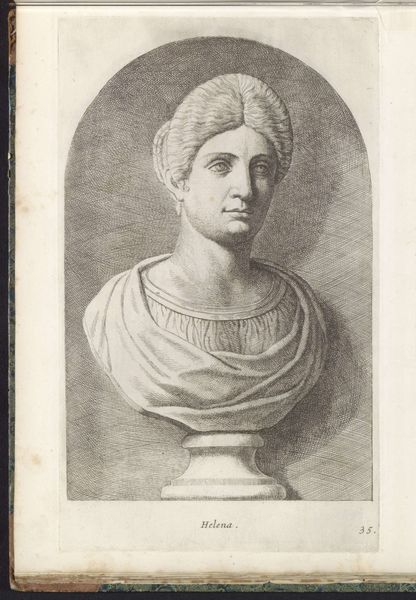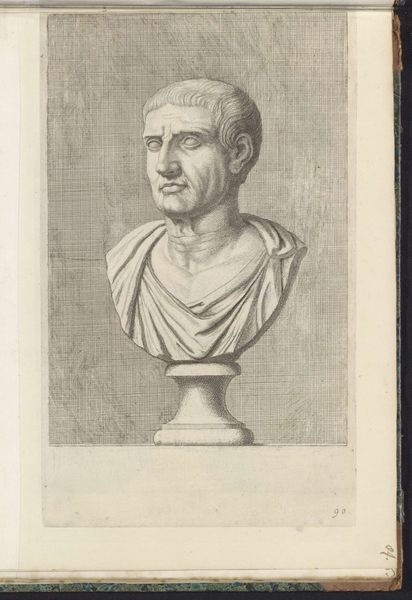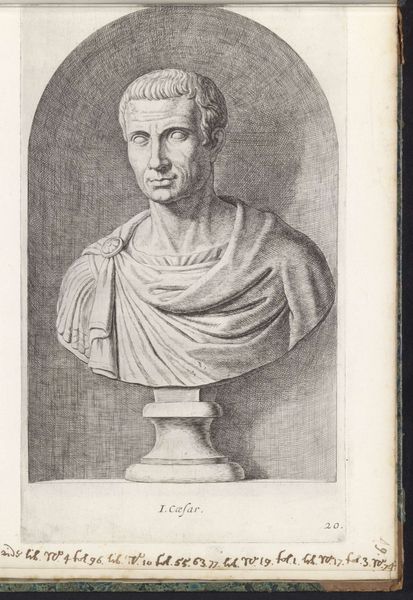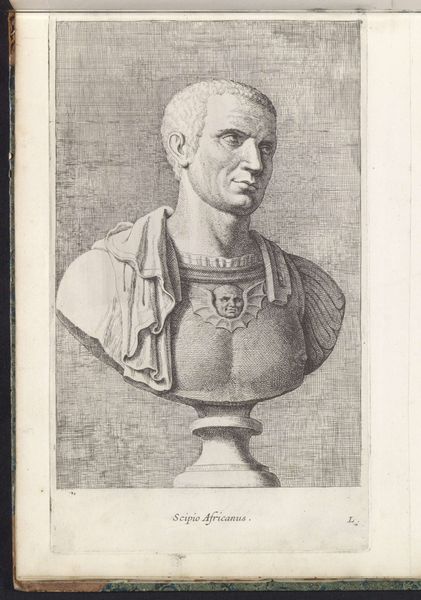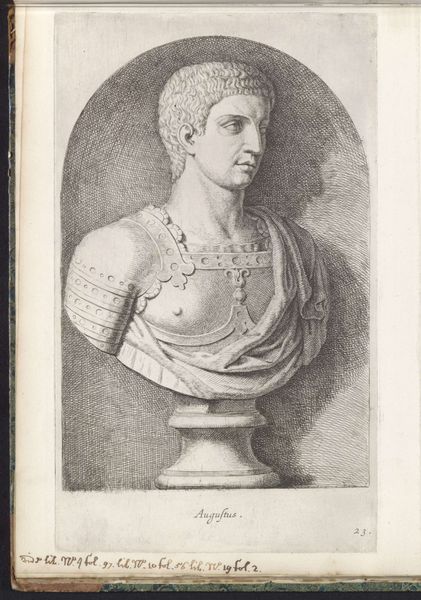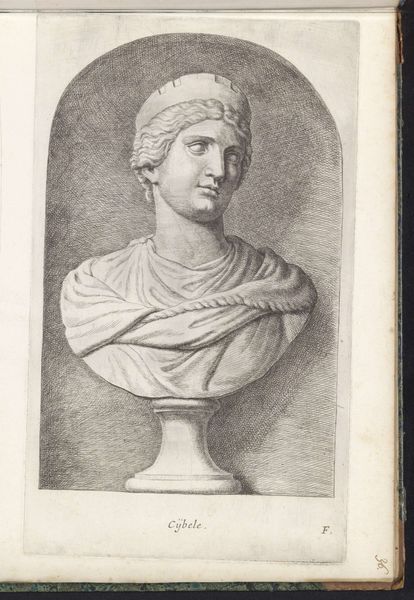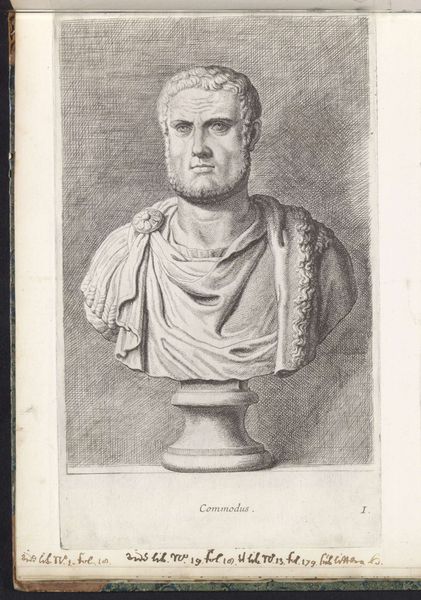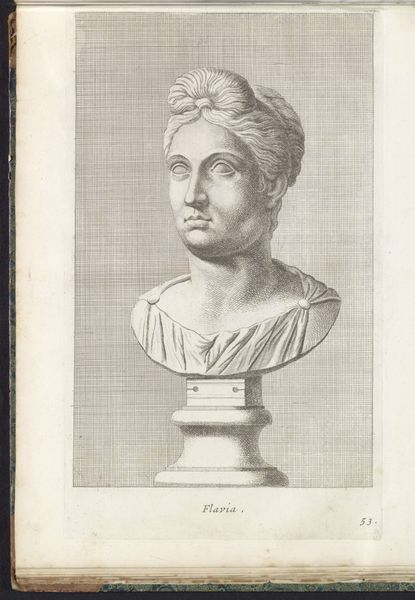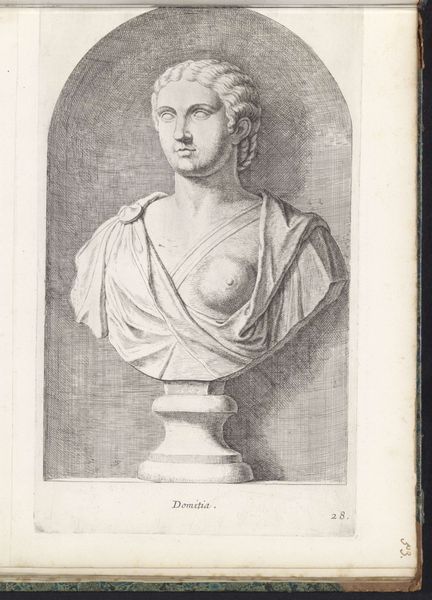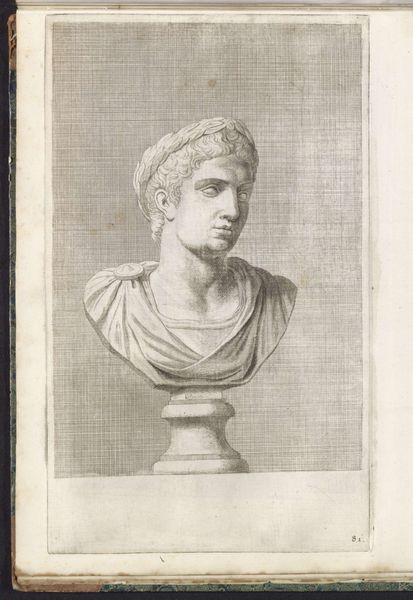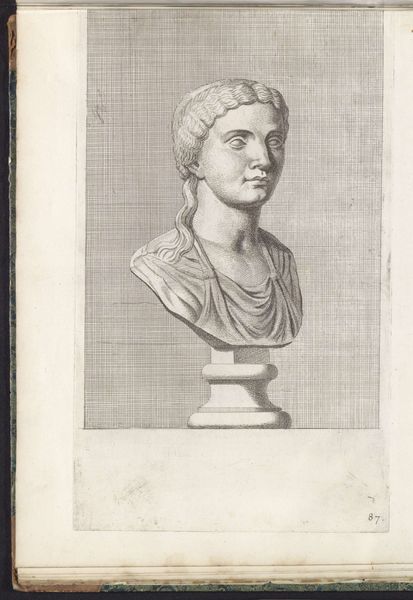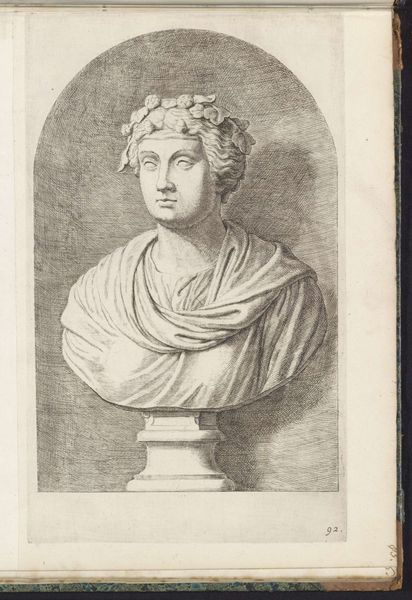
marble, engraving
#
portrait
#
baroque
#
classical-realism
#
history-painting
#
marble
#
engraving
Dimensions: height 320 mm, width 192 mm
Copyright: Rijks Museum: Open Domain
Curator: Today, we're examining a fascinating depiction of Marcus Junius Brutus. This marble bust, crafted sometime between 1646 and 1670, is currently held here at the Rijksmuseum and was realized by the artist Hubert Quellinus. Editor: Immediately, I'm struck by the austerity of this bust. It's quite commanding, isn’t it? The cold marble, the severe expression...there's a stoicism that permeates the entire piece. Curator: Absolutely. This bust presents Brutus not just as an individual, but as an ideal—a symbol of republican virtue and resistance against tyranny. Consider the historical context: Quellinus was working in a period grappling with issues of power and authority. Representing Brutus served as a commentary, reflecting republican ideals amid absolutist tendencies. Editor: I agree. Looking closer, the artist captures Brutus with specific iconographic signifiers: the draped toga suggests status and the circular fastening is similar to what is displayed in other pieces depicting generals, emphasizing his role in the political turmoil of his time. These elements weren’t accidental. How did Quellinus use classical imagery to imbue Brutus with meaning? Curator: Well, Brutus's act, from a contemporary perspective, also raises uncomfortable questions about violence, justifiable assassination, and the legacies of colonialism inherent in these so-called 'democratic' ideals that were propagated in later periods. Was this for the people, or simply power playing by other members of the elite? We see through feminist perspectives how the men of the period co-opted terms and values for their own political gain and legacy. Editor: That’s an interesting consideration of political and gendered elements during that period! It provides an interesting interpretation of how we understand the artwork today! Curator: Ultimately, Quellinus's depiction offers a lens through which to examine historical narratives and power structures in a historical and contemporary context. Editor: And through its carefully chosen iconography, it evokes powerful symbols, leaving a long shadow over interpretations of freedom, betrayal, and political upheaval.
Comments
No comments
Be the first to comment and join the conversation on the ultimate creative platform.
